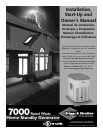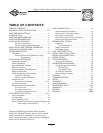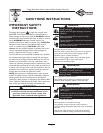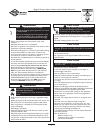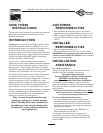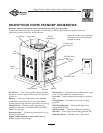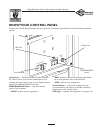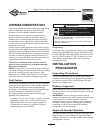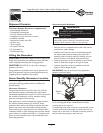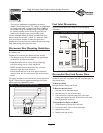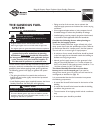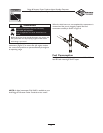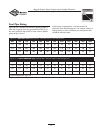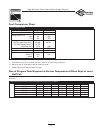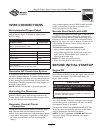
8
Briggs & Stratton Power Products Home Standby Generator
Installation, Start-Up and Owner’s Manual
OWNER ORIENTATION
This section provides the Home Standby Generator owner
with the information necessary to achieve the most
satisfactory and cost effective installation possible.
The illustrations are for typical circumstances and are
meant to familiarize you with the installation options
available with the Home Standby Generator.A thorough
understanding of these options will provide fundamental
control over the cost of installation, as well as ensure final
satisfaction and security.
Federal and local codes, appearance, noise levels, fuel types,
and distances are the factors that must be considered when
negotiating with an installation professional.As the distance
from the existing electrical service and gaseous fuel supply
increases, so must the piping and wiring materials.This is
necessary to comply with local codes, overcome electrical
voltage drops and gaseous fuel pressure drops.
The factors mentioned above will have a direct
affect on the overall price of your Home Standby
Generator installation.
NOTE: In some areas you may need to acquire electrical
permits for installing the Home Standby Generator, building
permits for installing gas lines, and permits for noise
allowances.Your installer should check your local codes
AND obtain the permits before installing the generator.
Fuel Factors
An important consideration affecting the entire installation
is the type of fuel used by your Home Standby Generator.
The generator was factory tested and adjusted using
natural gas as a fuel. Liquid propane (LP) may also be used
as fuel by installing the included conversion kit.
For proper generator performance, the following fuel
guidelines are recommended:
In engines set up to run on propane (LP) gas, commercial
grade HD5 propane with a minimum fuel energy of
2500 BTUs/ft3 with maximum propylene content of
5% and butane and heavier gas content of 2.5% and
minimum propane content of 90%.
Power Decrease at High Altitude or High
Temperature
Air density is less at high altitudes, resulting in less available
engine power. Specifically, engine power will decrease 3.5%
for each 1,000 feet (300 meters) above sea level and 1% for
each 10° F (5.6°C) above 77°F (25°C). Make sure you and
your installer consider these factors when determining
total generator load.
INSTALLATION
PROCEDURES
Unpacking Precautions
The unit is shipped bolted to its mounting pad, ready for
installation.Avoid damage from dropping, bumping, collision,
etc. Store and unpack carton with the proper side up, as
noted on the shipping carton.
Delivery Inspection
After removing the carton, carefully inspect the Home
Standby Generator for any damage that may have occurred
during shipment.
IMPORTANT: If loss or damage is noted at time of
delivery, have the person(s) making delivery note all damage
on the freight bill and affix his signature under the
consignor's memo of loss or damage. If loss or damage is
noted after delivery, separate the damaged materials and
contact the carrier for claim procedures. Missing or
damaged parts are not warranted.
Approved Transfer Switches
The Home Standby Generator should be used ONLY with
Briggs & Stratton Power Products UL approved Transfer
Switches. Connection to any other transfer switch will void
your generator warranty.
• The Home Standby Generator is equipped with an automatic
safety gas “fuel shut-off” valve.
• DO NOT operate the equipment if the “fuel shut-off” valve is
missing or inoperative.
Propane and Natural Gas are extremely
flammable and explosive.
Fire or explosion can cause severe burns or
death.
WARNING



